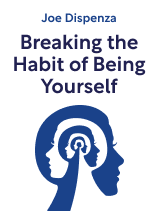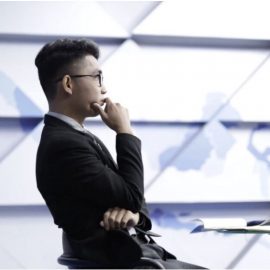

This article is an excerpt from the Shortform book guide to "Breaking the Habit of Being Yourself" by Joe Dispenza. Shortform has the world's best summaries and analyses of books you should be reading.
Like this article? Sign up for a free trial here.
Do you want to shed your old personality and become a new person? How can you break free from your old ways and begin to think and act in alignment with the vision of the person you want to be?
According to Joe Dispenza, our brains have the capacity for neuroplasticity. This means that you have the power to totally rewire your personality and become a whole new person. To do that, you have to ingrain new patterns of thinking, feeling, and behavior.
With this in mind, here’s how to become a new person, according to Joe Dispenza.
How Do You Change “You”?
In his book Breaking the Habit of Being Yourself, Joe Dispenza explains how to become a new person using the power of neuroplasticity. To change who you are and achieve the life you want, says Dispenza, you have to break your old emotional and thought habits and form new ones that are in line with who you want to be. This requires changing the way you think and feel. Through the power of neuroplasticity, these changes will become permanent in your brain.
(Shortform note: In Atomic Habits, James Clear expands on this idea and suggests that changing your habits requires not only changing your thought patterns, but your underlying beliefs about yourself. If you want to change yourself to be more assertive, for example, but deep down you still believe you are a timid person, the changes you make toward being assertive will not last.)
According to Dispenza, when an emotion lasts more than a few hours, it becomes a mood. When it lasts more than a few days, it becomes a temperament. When it lasts years, it becomes a personality trait. Replacing a negative personality trait with a positive one, then, requires changing the emotions that eventually build to that trait.
(Shortform note: In Emotional Intelligence, Daniel Goleman suggests that temperaments are actually something we’re born with, as opposed to long-term habits like Dispenza describes, though the two authors’ descriptions of emotions and moods do match up. Goleman goes on to say that being trapped in a negative temperament is a sign of a long-term disorder that may need medical intervention, whereas Dispenza suggests that temperaments can be controlled by your actions.)
To become who you want to be, make positive changes in the way you feel and think on a moment-to-moment basis, and then make those new thoughts and feelings a habit. Through the power of neuroplasticity and epigenetics, these changes will become permanent and physically ingrained in you.
(Shortform note: Dispenza doesn’t provide a timeline for how long you should expect change to take, and the time needed will depend on you, the habit you’re building, and your life. However, research suggests that it takes an average of 66 days to form a new habit. Some habits can be formed in a few weeks, but if you feel yourself stalling out and wonder why something hasn’t become habitual yet, consider that it may take several months to fully ingrain this change in your brain.)
Becoming the New You
Once you’ve broken the old habits that used to make up your personality and adopted new ones that reflect who you truly are and want to be, Dispenza says that the new “you” will be fully in control of your self.
At this point, your external environment no longer controls how you feel and live. You notice bad habits as they emerge and are able to break them easily, using your mind to overpower the effects of your body, your environment, and time.
(Shortform note: Dispenza doesn’t directly address the effects of trauma in the formation or re-formation of bad habits. Someone who achieves the mastery Dispenza describes but then experiences a major trauma might find his system insufficient for overcoming the negative habits that naturally develop as part of a trauma response, especially since some of these habits are survival mechanisms that may mitigate the effects of further trauma.)
You’ve closed the gap between who you are and who you present to the world and you’re no longer attached to the identity you built for the world.
Your state of being is one of awareness, says Dispenza. You’re in touch with your inner self and engage in self-reflection constantly, allowing you to identify thoughts or feelings you don’t want so you can consciously keep yourself out of those states and stop reinforcing the neural networks that formed the old you.
Finally, you’re free of wants and needs. You’ve moved from a state of selfishness—accompanied by emotions like shame, guilt, fear, and anger—into a state of selflessness, characterized by emotions like gratitude and joy. You’ve created the habit of being a new self.
| Are “You” a Goal or a Journey? Dispenza’s picture of the new “you” is appealing, but it suggests that once you’ve achieved this new self, your work is over. Some writers agree with this, arguing that your ultimate goal in self-improvement is to get to where you don’t feel like you need to improve yourself any more. Others say that self-improvement is never-ending and that even in a perfect utopia we would feel the urge to improve ourselves and our skills. Dispenza’s description of being in control of yourself and your habits suggests the former, that once you achieve mastery over your self you will have achieved, and will be able to maintain, your ideal self. This idea of permanent mastery, as well as its traits, resemble the idea of spiritual enlightenment, but in contrast with what Dispenza claims about his system, achieving true, permanent spiritual enlightenment is considered very rare. |

———End of Preview———
Like what you just read? Read the rest of the world's best book summary and analysis of Joe Dispenza's "Breaking the Habit of Being Yourself" at Shortform.
Here's what you'll find in our full Breaking the Habit of Being Yourself summary:
- How your habits are keeping you from growing
- How to unlearn your harmful habits to create a new you
- A four-step meditative practice to help you learn new habits






